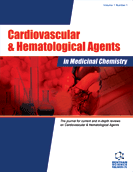Abstract
The chronic painful tendon (tendinopathy, tendinosis) is generally considered difficult to treat, not seldom causing long-term disability and sometimes ending the sports or work carreer. Most common sites for tendinopathy are the Achilles-, patellar-, extensor carpi radialis brevis (ERCB)-, and supraspinatus tendons. The origin of pain has for many years been unknown, but recently, by using ultrasound (US) + colour Doppler (CD), immunohistochemical analyses of tendon biopsies, and diagnostic injections of local anaestesia, we found a close relationship between areas with vasculoneural ingrowth and tendon pain. Sensory nerves (Substance-P-SP and Calcitonin Gene Related Peptide-CGRP) were found inside and outside the vascular wall. In following clinical studies we have demonstrated good short-and mid-term clinical results using treatment with US+CD-guided sclerosing polidocanol injections, targeting the area with neovessels outside the tendon. Two-year follow ups have showed remaining good clinical results, and sonographically signs of remodelling with a significantly thinner tendon with a more normal structure. Whether the effects of polidocanol are mediated through destruction of neovessels, activity on nerves or a combination, is under evaluation.
Keywords: Chronic tendon pain, neovessels, nerves, ultrasonography, Doppler, polidocanol
Cardiovascular & Hematological Agents in Medicinal Chemistry
Title: Sclerosing Polidocanol Injections of Small Vessels to Treat the Chronic Painful Tendon
Volume: 5 Issue: 2
Author(s): H. Alfredson and R. Lorentzon
Affiliation:
Keywords: Chronic tendon pain, neovessels, nerves, ultrasonography, Doppler, polidocanol
Abstract: The chronic painful tendon (tendinopathy, tendinosis) is generally considered difficult to treat, not seldom causing long-term disability and sometimes ending the sports or work carreer. Most common sites for tendinopathy are the Achilles-, patellar-, extensor carpi radialis brevis (ERCB)-, and supraspinatus tendons. The origin of pain has for many years been unknown, but recently, by using ultrasound (US) + colour Doppler (CD), immunohistochemical analyses of tendon biopsies, and diagnostic injections of local anaestesia, we found a close relationship between areas with vasculoneural ingrowth and tendon pain. Sensory nerves (Substance-P-SP and Calcitonin Gene Related Peptide-CGRP) were found inside and outside the vascular wall. In following clinical studies we have demonstrated good short-and mid-term clinical results using treatment with US+CD-guided sclerosing polidocanol injections, targeting the area with neovessels outside the tendon. Two-year follow ups have showed remaining good clinical results, and sonographically signs of remodelling with a significantly thinner tendon with a more normal structure. Whether the effects of polidocanol are mediated through destruction of neovessels, activity on nerves or a combination, is under evaluation.
Export Options
About this article
Cite this article as:
Alfredson H. and Lorentzon R., Sclerosing Polidocanol Injections of Small Vessels to Treat the Chronic Painful Tendon, Cardiovascular & Hematological Agents in Medicinal Chemistry 2007; 5 (2) . https://dx.doi.org/10.2174/187152507780363232
| DOI https://dx.doi.org/10.2174/187152507780363232 |
Print ISSN 1871-5257 |
| Publisher Name Bentham Science Publisher |
Online ISSN 1875-6182 |
 8
8
- Author Guidelines
- Bentham Author Support Services (BASS)
- Graphical Abstracts
- Fabricating and Stating False Information
- Research Misconduct
- Post Publication Discussions and Corrections
- Publishing Ethics and Rectitude
- Increase Visibility of Your Article
- Archiving Policies
- Peer Review Workflow
- Order Your Article Before Print
- Promote Your Article
- Manuscript Transfer Facility
- Editorial Policies
- Allegations from Whistleblowers
Related Articles
-
Medical Treatment of Chronic Venous Insufficiency
Vascular Disease Prevention (Discontinued) Genetic Variations of the Hemostatic System as Risk Factors for Venous and Arterial Thrombotic Disease
Current Genomics The Role of MDCT in Craniocervical Junction Pathologies: Pictorial Review
Current Medical Imaging On the Sympathetic Innervation of the Human Greater Saphenous Vein: Relevance to Clinical Practice
Current Vascular Pharmacology Essentials of Daflon 500 mg: From Early Valve Protection to Long-Term Benefits in the Management of Chronic Venous Disease
Current Pharmaceutical Design The Fluctuations of Melatonin and Copeptin Levels in Blood Serum During Surgical Stress Regarding the Pediatric Population
Current Pediatric Reviews Chronic Tendon Pain-Implications for Treatment: An Update
Current Drug Targets Ultrasound Diagnosis of Soft Tissue Vascular Malformations and Tumours
Current Medical Imaging Vascular Effects of Estrogenic Menopausal Hormone Therapy
Reviews on Recent Clinical Trials Integrative Control of Gastrointestinal Motility by Nitric Oxide
Current Medicinal Chemistry Genomics and the Prospects of Existing and Emerging Therapeutics for Cardiovascular Diseases
Current Pharmaceutical Design Stem Cell and Tissue Engineering Therapies for Ocular Regeneration
Current Stem Cell Research & Therapy Maternal Sepsis: Current Approaches to Recognition and Clinical Management
Current Women`s Health Reviews Tissue Engineering Applications and Stem Cell Approaches to the Skin, Nerves and Blood Vessels
Current Stem Cell Research & Therapy Identification of Novel Anti-inflammatory Agents from Ayurvedic Medicine for Prevention of Chronic Diseases: “Reverse Pharmacology” and “Bedside to Bench” Approach
Current Drug Targets Matrix Metalloproteinases as Potential Targets in the Venous Dilation Associated with Varicose Veins
Current Drug Targets Microbial Agents, Immune Function and Atheromatosis: The Chlamydophila pneumoniae Role
Current Immunology Reviews (Discontinued) Endometriosis and Perinatal Outcome - A Systematic Review of the Literature
Current Women`s Health Reviews Localisation of Endothelin-1 and its Receptors in Vascular Tissue as Seen at the Electron Microscopic Level
Current Vascular Pharmacology A Qualitative and Quantitative Study of the Innervation of the Human Non Pregnant Uterus
Current Protein & Peptide Science


























